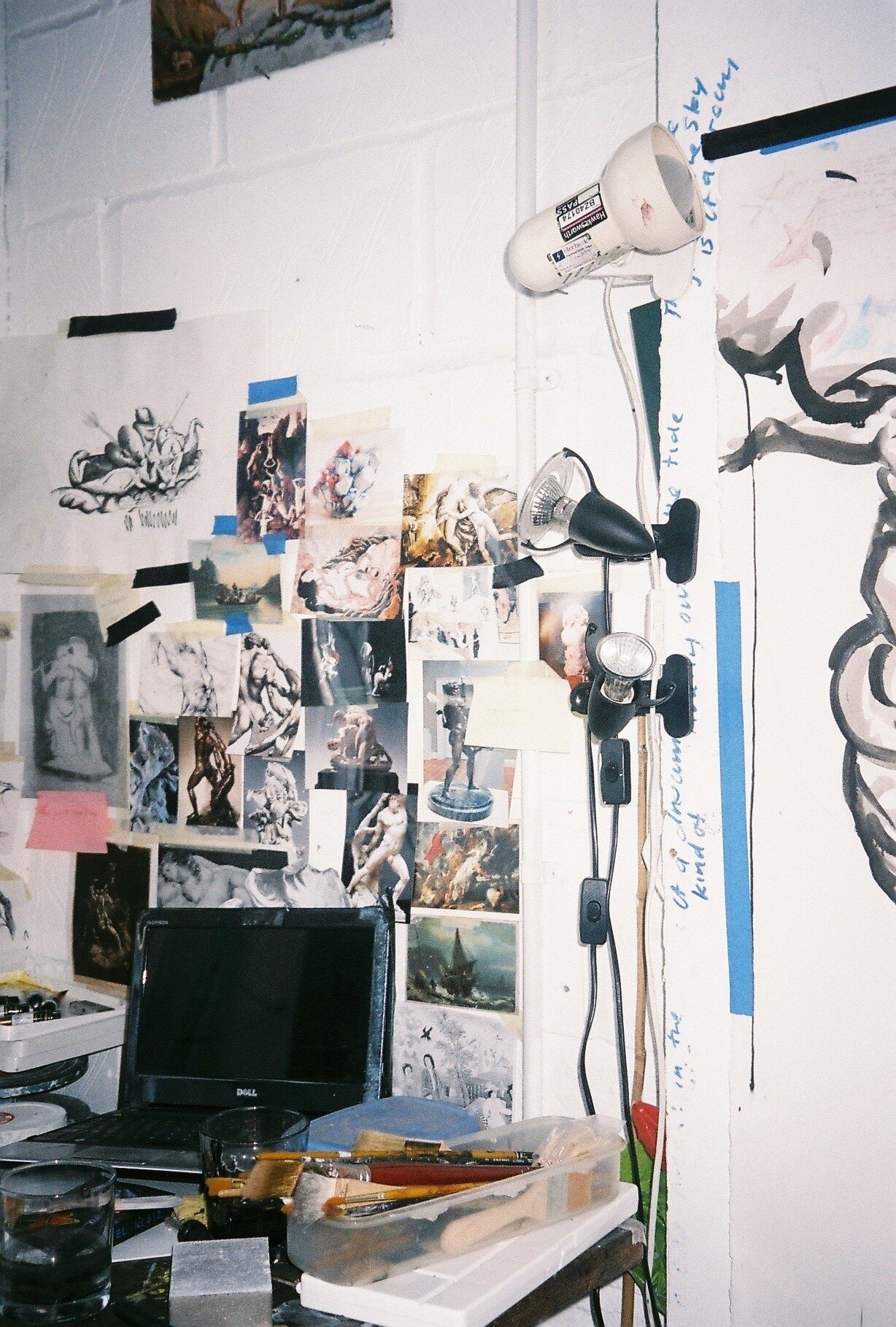Annie Attridge peculiar porcelain works depict erotic desires, an array of fantasies dominated by ambiguous masked characters, and voluptuous female bodies… all built with a romantic awareness. To our surprise, when we visited the artist, she was exploring techniques of mono-printing, welding, carving, assembling tiles, cyanotype, and recently experimenting with language, still embodying all that we love about Attridge’s detailed work. Now, with her use of text, her works take on further meaning, and the artist points out how “poetry is a law unto itself, it doesn’t adhere to the normal prescriptive notions of the English language. There’s a freedom in using language in associative ways, and it allows the viewer to make their own connections”. And that’s merely the beginning. The artist tells us more about her interest in juxtaposing different techniques and approaches, and how this is all grounded into making work that ultimately excites her.
PROCESS
Your porcelain works are made in the basis of being constantly nurtured and caressed. What can you tell us about this delicate process?
Porcelain tends to be treated in three processes, each particular and delicate in their own ways. You need to plan your treatment of the material to some degree, but each stage presents an opportunity to work into the material, and caress sensual shapes and forms from its form. The first phase is wet and sloppy. It’s easily malleable. In this state, you create you skeleton, the structure on which to build your story. The second phase is a leather state. The time when you asset your choices, you cut and carve things, create holes, you poke this fledging form, you subtract and add. The last dry phase allows you to nurse the naturally formed cracks, like Victorians creasing their orchids; embracing imperfections, and making better upon them. It’s a sensitive material; it has a memory, whereby it wants to return to its original form, the first caress. It needs to be handled gently with the knowledge that this memory will always exist within the form.
There is a performative element in your process, often involved in praying to the Kiln Gods and goddess when making sculpture; only drinking red herbal tea when painting; and standing on wood when making your text-based works. What can you tell us about these rituals?
I didn’t intend for these strange habits to be rituals, but after a practice of 17 years, these habits have become ritualistic. Like a meditation, it sets the mood. Of course, I could function without them, but these simple pleasures tend calm
the mind.
You work with recognisable symbols varying from hammers to love birds. Is this symbolism a new addition to your practice?
The repetition of certain motifs in my work is a conscious decision. They may have secret meanings to me, but often they are quite obvious romantic or gender icons. My work has always featured abstracted bodily forms, and as a collection you see there are lots of more recognisable fictional characters also.
From making monoprints, to welding, carving, making tiles or experimenting with cyanotype… what draws you to a certain technique or medium?
I don’t really think that my approach is medium specific. As an artist, I am constantly learning new techniques, and the ones that excite me usually find their way into my work. In recent years, I’ve enjoyed juxtaposing different techniques and approaches and I’m pretty happy with the outcomes. My choice of medium may be led by the quality and texture of it’s finish, colour, and the process, but ultimately I treat my use of materials in the same way. Similarly to how I’ve described working with the porcelain, their treatments are phased. Obviously some materials are less forgiving and harder to work and you have to be more considered – but everything is a journey
You mentioned at your studio that someone once told you to make works that “turned you on”… In this sense, are you literally making works in this manner? What else lies ahead?
Yes, to a degree. You have to love what you’re making. Of course, we are often creatively challenged, but its important to stay grounded and make work that excites you as an Artist and not overly worry about how future audiences are going to react to it. In terms of what lies ahead, I will be exhibiting at “The Precious Clay “ at the Museum of Royal Worcester from the 20 Sep -20 March
WORDS BY VANESSA MURRELL













